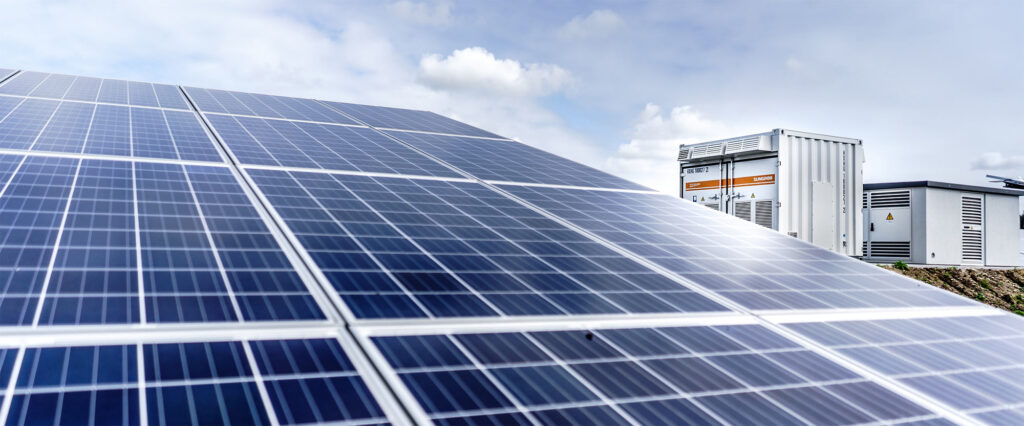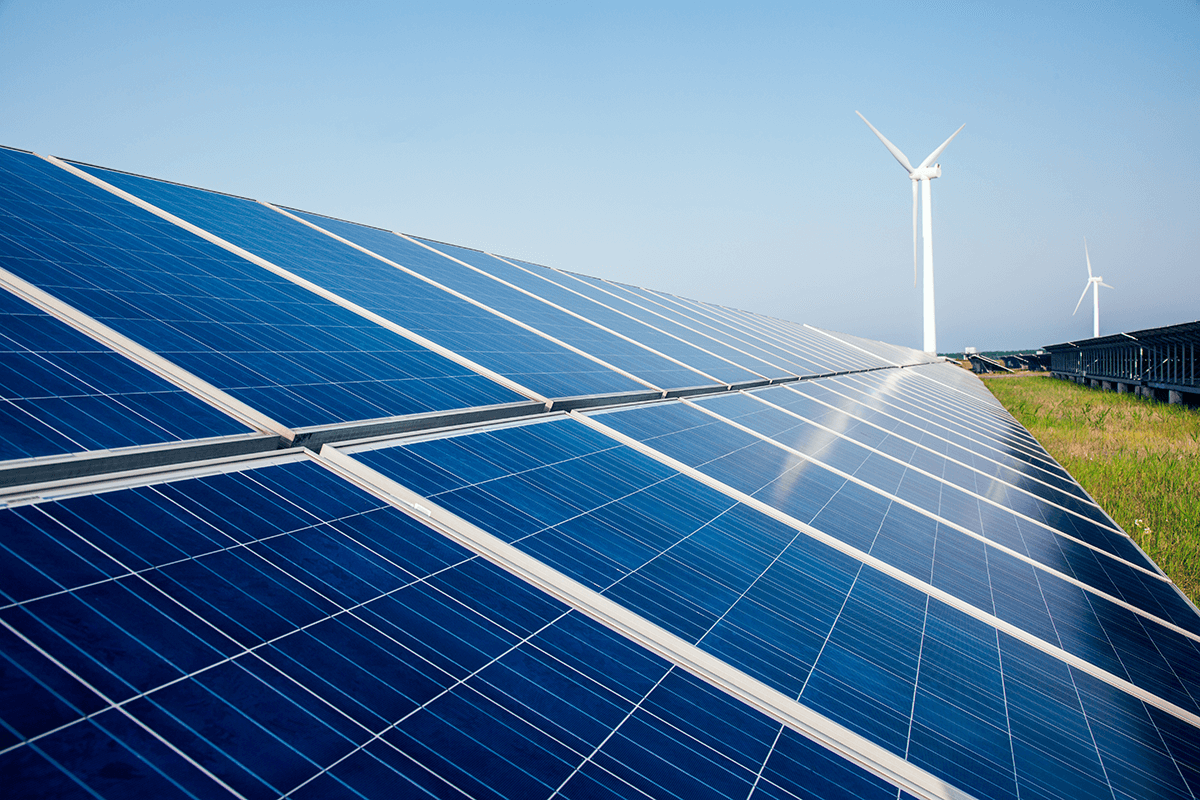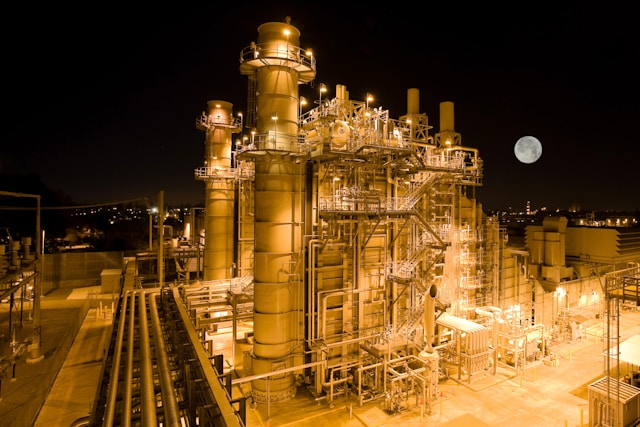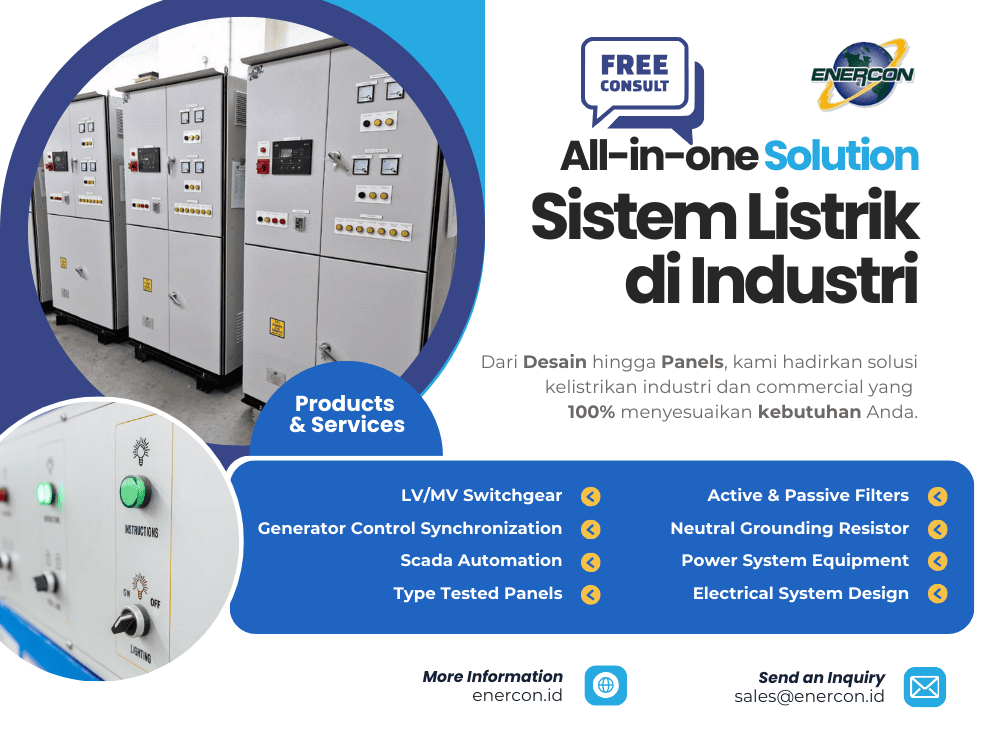Solar energy is growing fast in Indonesia and around the world. Businesses and homeowners are turning to solar panels to reduce electricity costs and lower emissions.
At Enercon Power Indonesia, we see the value in smart, efficient energy solutions. Understanding the long-term savings of solar helps you plan better and invest with confidence.
Solar energy lowers your monthly bills. It delivers strong returns over time. It also helps reduce fossil fuel use and supports cleaner power systems.
How Solar Energy Works: A Primer
Basics of Solar Panel Technology and Energy Conversion
Solar panels generate electricity by using sunlight. Each panel contains photovoltaic (PV) cells made from materials like silicon. These cells create direct current (DC) electricity when exposed to sunlight.
Because most homes and businesses use alternating current (AC), the system includes an inverter. This device converts the DC power into AC power, making it ready for daily use.
The process is clean, quiet, and works as long as the sun is shining. Even on cloudy days, panels can still produce some electricity.
Key Components: Solar Panels, Inverters, Batteries
A complete solar energy system has several main parts:
- Solar Panels: Capture sunlight and produce DC electricity.
- Inverters: Convert DC to AC so your lights, appliances, and machines can use it.
- Batteries (optional): Store extra power produced during the day for use at night or during blackouts.
- Monitoring Systems: Help track how much energy the system is producing and using.
Each part plays a role in helping you save money and manage your energy use more efficiently.
Grid-Tied vs. Off-Grid Systems: What’s Best for Savings?
There are two main types of solar systems:
- Grid-Tied Systems: These are connected to the local electricity grid. If your solar panels make more energy than you use, the extra power goes to the grid. In some areas, you can earn credits or get paid for this energy through net metering. These systems are often cheaper to install and give quicker savings.
- Off-Grid Systems: These work without a connection to the grid. You rely fully on solar panels and batteries. They are useful in remote locations where grid access is limited. However, they need larger battery storage and cost more to set up.
For most homes and businesses, grid-tied systems offer the best balance of savings and reliability.
Breaking Down Solar Energy Cost Savings
1. Immediate Reduction in Monthly Electricity Bills
Once a solar system is active, it starts to reduce electricity bills right away. You use the energy your panels produce before drawing power from the grid. This lowers the amount of energy you buy from your utility company.
For many users, this means saving 50% or more on monthly bills, depending on system size and electricity use.
2. Long-Term ROI: Payback Periods and Lifetime Savings (10–25+ Years)
Solar energy systems last 25 years or more. Most systems reach payback within 5 to 10 years. After that, the electricity is essentially free.
Over the full life of the system, users can save tens of millions of rupiah. Larger systems for factories or commercial buildings can save even more.
3. Avoiding Rising Utility Rates with Energy Independence
Electricity prices often increase over time. By producing your own power, you reduce your exposure to rising utility rates.
With solar, you gain more control over your energy costs. This helps you manage budgets more accurately, especially for long-term operations.
Read: Benefits of Solar EPC Services for Industrial Growth
Financial Incentives and Tools to Maximize Savings

1. Government Incentives: Tax Credits, Rebates, and Grants
Many governments offer financial incentives to lower the cost of solar energy systems. These include tax credits, rebates, and grants.
Tax credits reduce the amount of income tax you owe. Rebates give you a direct cash discount on system costs. Grants can help fund part of your installation.
These programs lower upfront costs and improve your return on investment.
2. Net Metering: Earning Credits for Excess Energy
Net metering lets you send extra solar power back to the grid. In return, you earn credits on your electricity bill.
This reduces your net electricity costs. In some cases, you can even earn money if your system produces more energy than you use.
3. Time-of-Use Tariffs: Optimizing Energy Use for Lower Rates
Some utilities charge different rates depending on the time of day. Electricity is more expensive during peak hours and cheaper during off-peak hours.
Solar panels help lower energy use during the most expensive times. If combined with battery storage, you can save even more by using stored energy when rates are highest.
4. Virtual Power Plants (VPPs): Selling Stored Energy During Peak Demand
A Virtual Power Plant (VPP) links many solar and battery systems together. It sells stored energy back to the grid during peak demand.
Joining a VPP can create extra income for homeowners and businesses. It also helps the grid stay stable during periods of high use.
Read: Why Your Business Needs Energy-Efficient Motors for HVAC Systems?
The Role of Solar Batteries in Amplifying Savings
1. Storing Energy for Nighttime and Peak Hours
Solar panels only produce power during the day. Batteries store extra energy for use at night or during cloudy weather.
This helps keep your power supply stable and reduces the need to buy electricity when solar panels are not generating.
2. Reducing Reliance on the Grid and Avoiding Demand Charges
By using stored energy, you rely less on the grid. This helps reduce your electricity bills further, especially in areas with high demand charges.
Demand charges are extra fees based on your highest usage in a short period. Batteries help smooth out your energy use and avoid these extra costs.
3. Participating in VPPs for Additional Earnings
If you have a solar battery, you may be able to join a Virtual Power Plant (VPP). In a VPP, your stored energy is sold to the grid when demand is high.
This creates an extra income stream while also improving your return on investment.
Calculating Your Solar Energy Savings
How to Analyze Utility Bills to Determine System Size
Start by reviewing your electricity bills from the past 12 months. Check your average monthly usage in kilowatt-hours (kWh).
This helps estimate the size of the solar system you need. A larger system may be required if your usage is high or if you plan to add batteries.
Knowing your usage also helps you see how much you could save each month with solar.
Tools for Estimating Solar Panel Costs and Break-Even Points
Several tools and calculators can estimate system cost, energy output, and payback period. These tools use your location, roof size, energy use, and sunlight hours.
They show how many years it will take for your savings to cover your installation cost—called the break-even point.
After reaching this point, your savings are direct profit for the rest of the system’s life.
Example Savings for Residential, Commercial, and Industrial Setups
- Residential: A home with a 5 kW system can save 50–80% on electricity bills. Payback is often reached in 6–8 years.
- Commercial: A medium-sized shop with a 20 kW system can save millions of rupiah per year, with a payback in 5–7 years.
- Industrial: A factory using a 100 kW system may achieve energy independence. With batteries and net metering, annual savings can be substantial.
These examples show how solar energy supports strong financial planning for all types of users.
Read: Achieving Voltage Stability in Industrial Power Systems
Factors Influencing Solar Savings
Geographic Location and Sunlight Availability
The amount of sunlight your location receives affects how much energy your solar panels can produce. Areas with more sunlight generate more electricity, leading to higher savings.
In Indonesia, many regions have strong solar potential, making solar a good option for homes and businesses across the country.
System Size, Efficiency, and Panel Orientation
The size of your solar system should match your electricity needs. A system that is too small may not reduce your bills enough. A system that is too large may cost more without adding value.
Panel efficiency also matters. High-efficiency panels generate more power in the same space. Orientation and tilt angle affect how well panels receive sunlight. South-facing panels with a slight tilt usually work best.
Local Electricity Rates and Policy Support (e.g., Net Metering Rules)
Your local electricity rates impact how much money you save with solar. Higher rates lead to bigger savings.
Government support programs, like net metering, increase your returns. These policies let you earn credits or payments for extra energy you send to the grid.
Environmental and Social Benefits
Reducing Carbon Footprint and Fossil Fuel Dependence
Solar energy does not produce carbon emissions during operation. By using solar, you lower your reliance on electricity from coal or gas.
This helps reduce air pollution and supports a cleaner environment.
Enhancing Property Value with Solar Installations
Properties with solar systems are often more attractive to buyers. Solar panels lower energy costs, which can increase a home or building’s resale value.
Many buyers see solar as a smart investment that adds long-term benefits.
Community Impact: Supporting Renewable Energy Transitions
Installing solar panels helps increase the share of renewable energy in your area. As more homes and businesses adopt solar, the electricity grid becomes cleaner.
Overcoming Challenges and Misconceptions
Debunking Myths About Upfront Costs and Maintenance
Some people believe solar systems are too expensive to install. In reality, costs have dropped significantly. With government incentives and financing options, many users can afford solar.
Others worry about maintenance. Most solar systems need little upkeep. Occasional cleaning and simple checks are often enough to keep the system working well.
Addressing Concerns About Panel Longevity (25–30 Years)
Modern solar panels last 25 to 30 years. They continue to produce energy during this time, though efficiency may reduce slightly after many years.
Most manufacturers offer warranties that guarantee performance for at least 20 to 25 years.
Permits and Installation: What to Expect
Installing solar panels may require permits and utility approval. Trusted providers handle these steps for you.
The installation process usually takes a few days. Once the system is approved and connected, it starts generating savings right away.
Read: How to Conduct a Commercial Building Energy Audit
Choosing the Right Solar Provider
Key Questions to Ask Installers
Before hiring a solar installer, ask about their certifications, warranties, and past projects. Make sure they are experienced and follow national standards.
Important questions include:
- What is the warranty for panels and inverters?
- Are your installers certified?
- How many systems have you installed?
Clear answers build trust and reduce future risks.
Comparing Quotes and Financing Options
Get quotes from multiple providers. Compare system size, estimated output, cost, and included services.
Ask about financing options like:
- Loans: You own the system and repay monthly.
- Leases: The provider owns the system; you pay a fixed fee.
- Power Purchase Agreements (PPAs): You pay for the energy, not the system.
Choose the plan that fits your budget and long-term goals.
Spotlight on Industry Leaders (e.g., Freyr Energy, Contendre Solar)
Companies like Freyr Energy and Contendre Solar have strong reputations in solar installation. They offer end-to-end services, from site assessment to system monitoring.
Working with a reliable provider ensures better performance and customer support.
Conclusion: The Future of Solar Energy Cost Savings
Solar energy helps reduce electricity bills, protects against rising rates, and supports cleaner energy use. With added tools like batteries and VPPs, the savings go even further.
Whether you run a home, business, or factory, solar can cut costs and improve your financial outlook. Start your solar journey today and take control of your energy future.





